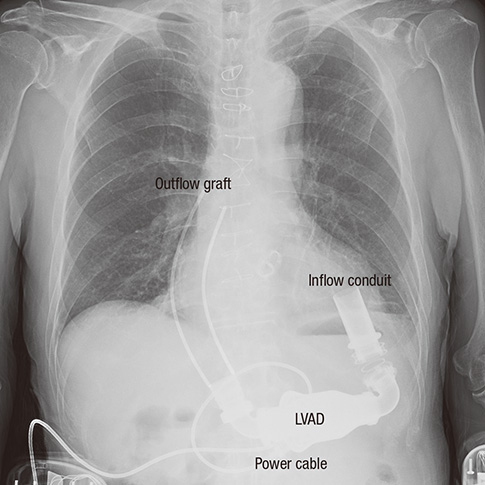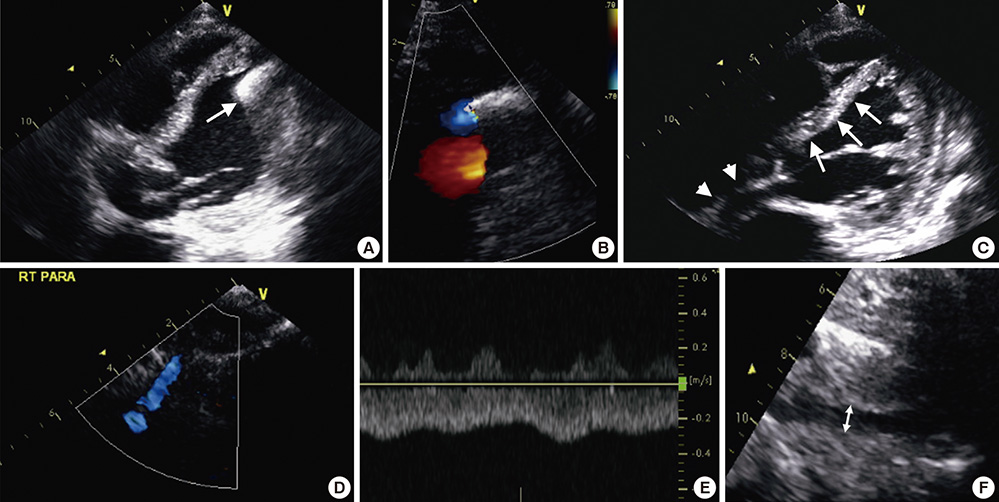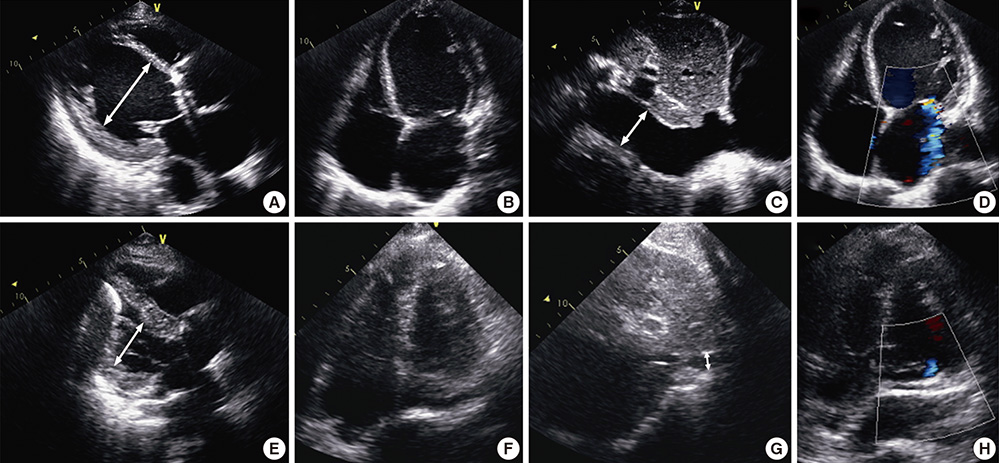J Korean Med Sci.
2014 Jan;29(1):137-140. 10.3346/jkms.2014.29.1.137.
The Successful Implantation of Continuous-Flow Left Ventricular Assist Device as a Destination Therapy in Korea: Echocardiographic Assessment
- Affiliations
-
- 1Division of Cardiology, Department of Medicine, Samsung Medical Center, Sungkyunkwan University School of Medicine, Seoul, Korea.
- 2Department of Thoracic and Cardiovascular Surgery, Samsung Medical Center, Sungkyunkwan University School of Medicine, Seoul, Korea. ytlee55@yahoo.com
- 3Cardiovascular Imaging Center, Samsung Medical Center, Sungkyunkwan University School of Medicine, Seoul, Korea.
- 4Cardiac and Vascular Center, Samsung Medical Center, Sungkyunkwan University School of Medicine, Seoul, Korea.
- KMID: 1796927
- DOI: http://doi.org/10.3346/jkms.2014.29.1.137
Abstract
- Left ventricular assist device (LVAD) is a good treatment option for the patients ineligible for cardiac transplantation. Several studies have demonstrated that a ventricular assist device improves the quality of life and prognosis of the patients with end-stage heart failure. A 75-yr-old man debilitated with New York Heart Association (NYHA) functional class III-IV due to severe left ventricular systolic dysfunction received LVAD implantation as a destination therapy. The patient was discharged with improved functional status (NYHA functional class II) after appropriate cardiac rehabilitation and education about how to manage the device and potential emergency situations. This is the first case of successful continuous-flow LVAD implantation as a destination therapy in Korea.
MeSH Terms
Figure
Reference
-
1. Rose EA, Gelijns AC, Moskowitz AJ, Heitjan DF, Stevenson LW, Dembitsky W, Long JW, Ascheim DD, Tierney AR, Levitan RG, et al. Long-term use of a left ventricular assist device for end-stage heart failure. N Engl J Med. 2001; 345:1435–1443.2. Long JW, Kfoury AG, Slaughter MS, Silver M, Milano C, Rogers J, Delgado R, Frazier OH. Long-term destination therapy with the HeartMate XVE left ventricular assist device: improved outcomes since the REMATCH Study. Congest Heart Fail. 2005; 11:133–138.3. Park SJ, Milano CA, Tatooles AJ, Rogers JG, Adamson RM, Steidley DE, Ewald GA, Sundareswaran KS, Farrar DJ, Slaughter MS. Outcomes in advanced heart failure patients with left ventricular assist devices for destination therapy. Circ Heart Fail. 2012; 5:241–248.4. Fang JC. Rise of the machines: left ventricular assist devices as permanent therapy for advanced heart failure. N Engl J Med. 2009; 361:2282–2285.5. Lietz K, Long JW, Kfoury AG, Slaughter MS, Silver MA, Milano CA, Rogers JG, Naka Y, Mancini D, Miller LW. Outcomes of left ventricular assist device implantation as destination therapy in the post-REMATCH era: implications for patient selection. Circulation. 2007; 116:497–505.6. Cowger J, Sundareswaran K, Rogers JG, Park SJ, Pagani FD, Bhat G, Jaski B, Farrar DJ, Slaughter MS. Predicting survival in patients receiving continuous flow left ventricular assist devices: the HeartMate II risk score. J Am Coll Cardiol. 2013; 61:313–321.7. Lee S, Park YH, Lim SH, Kwak YT, Kim H, Chang BC. Successful mechanical circulatory support as a bridge to transplantation. Asian Cardiovasc Thorac Ann. 2007; 15:243–245.8. Topilsky Y, Maltais S, Oh JK, Atchison FW, Perrault LP, Carrier M, Park SJ. Focused review on transthoracic echocardiographic assessment of patients with continuous axial left ventricular assist devices. Cardiol Res Pract. 2011; 2011:187434.9. Mookadam F, Kendall CB, Wong RK, Kalya A, Warsame T, Arabia FA, Lusk J, Moustafa S, Steidley E, Quader N, et al. Left ventricular assist devices: physiologic assessment using echocardiography for management and optimization. Ultrasound Med Biol. 2012; 38:335–345.
- Full Text Links
- Actions
-
Cited
- CITED
-
- Close
- Share
- Similar articles
-
- Successful Bridge to Heart Transplantation through Ventricular Assist Device Implantation and Concomitant Fontan Completion in a Patient with Glenn Physiology: A Case Report
- Temporary Right Ventricular Assist Device Insertion via Left Thoracotomy after Left Ventricular Assist Device Implantation
- Exercise Therapy for an Older Patient With Left Ventricular Assist Device
- Successful open chest intraoperative epicardial ventricular tachycardia mapping and ablation during the HeartMate-3 left ventricular assist device implantation in Taiwan
- Systematic Left Ventricular Assist Device Implant Eligibility with Non-Invasive Assessment: The SIENA Protocol




